Alva Vanderbilt Belmont Gravesite
Introduction
Text-to-speech Audio
This elaborate mausoleum is the resting place of Alva Erskine Smith Vanderbilt Belmont (1853-1933) and Oliver Hazard Perry Belmont (1858-1908). Alva Belmont was a leader of the women's suffrage movement, using her wealth and social status to support the movement. She founded the Political Equality League in 1909, served as president of the National Woman's Party in 1921, and financed the purchase of the party headquarters in Washington D.C. After Oliver Belmont’s death on June 10, 1908, Alva Belmont commissioned the mausoleum, which was completed in 1910. It is a replica of the chapel of Saint-Hubert at Amboise in France. Saint Hubert is the patron saint of hunters so there are many references to stags and antlers repeated in the design.
Images
Belmont Chapel, Woodlawn Cemetery
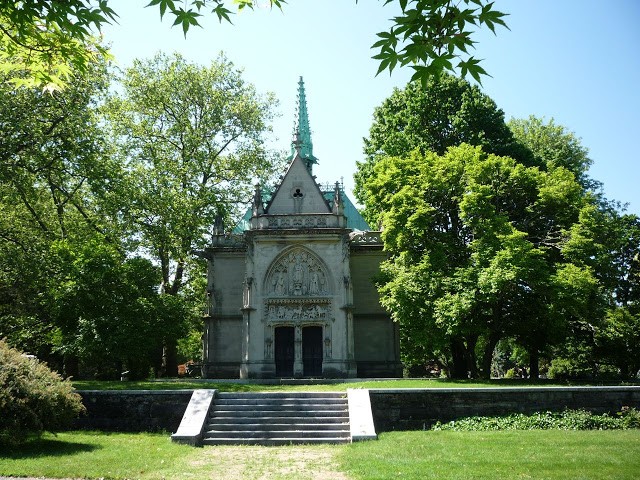
Alva Vanderbilt dressed for her 1883 ball
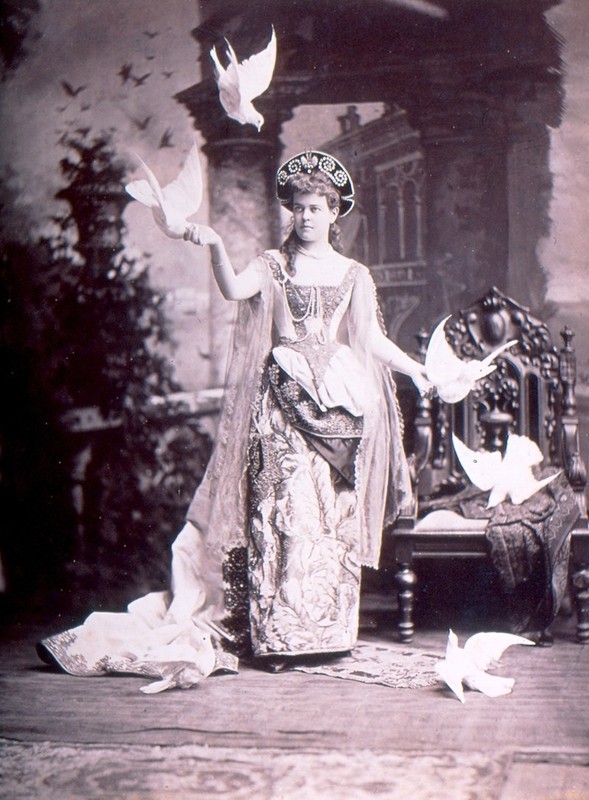
Alva Belmont, 1911
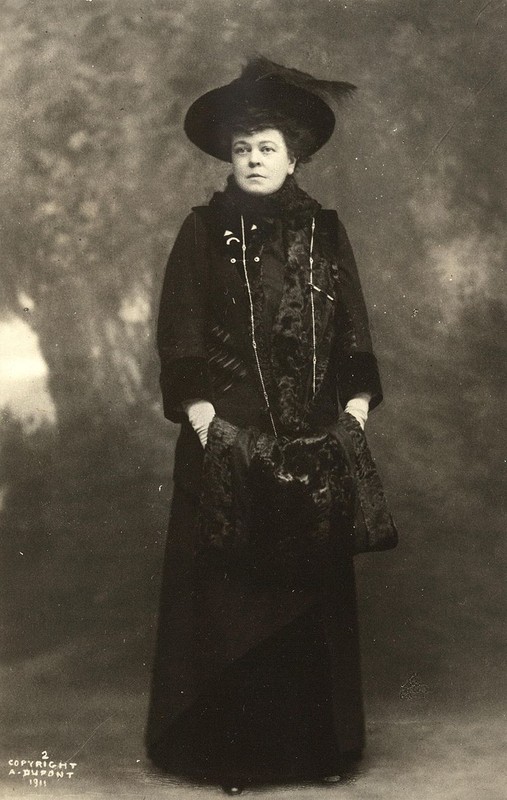
Alva Belmont is seated second from right at a Women's Voter Convention in September 1915 (Library of Congress)
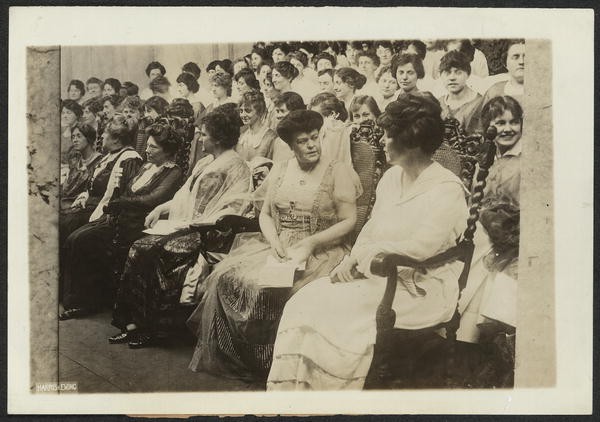
Alva Belmont (Library of Congress)
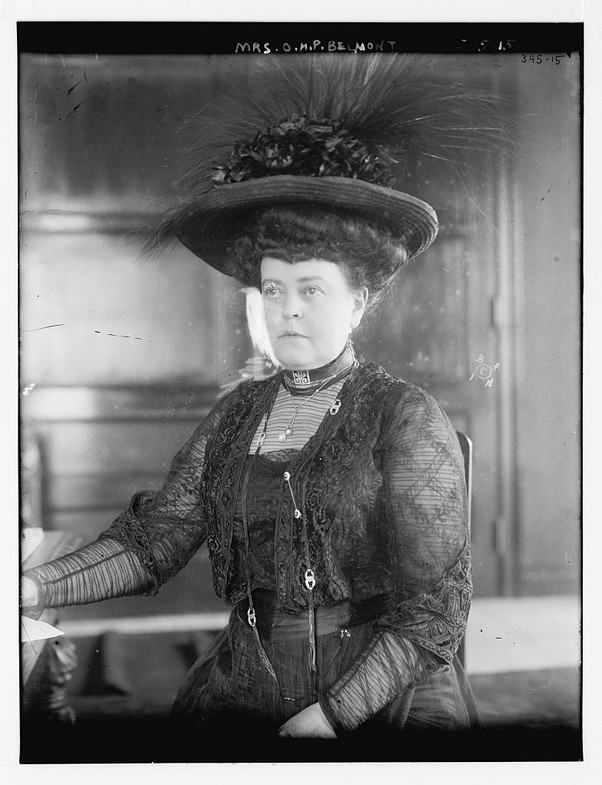
Alva Belmont, 1922
_Belmont_(Cropped).jpg)
Alva Belmont's burial procession at Belmont Chapel
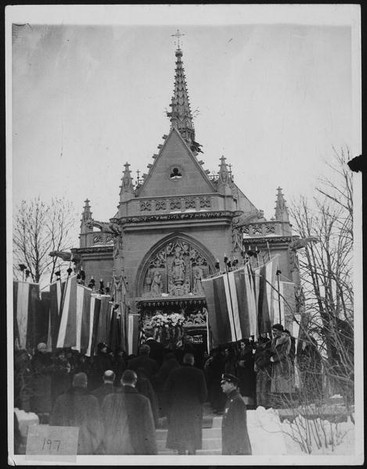
Interior of Belmont Chapel
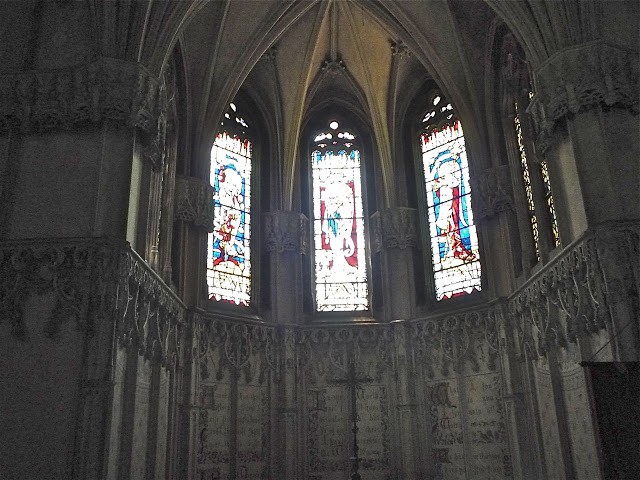
Close up of the relief work on Belmont Chapel. The relief tells the history of Saint Hubert, patron saint of hunters.
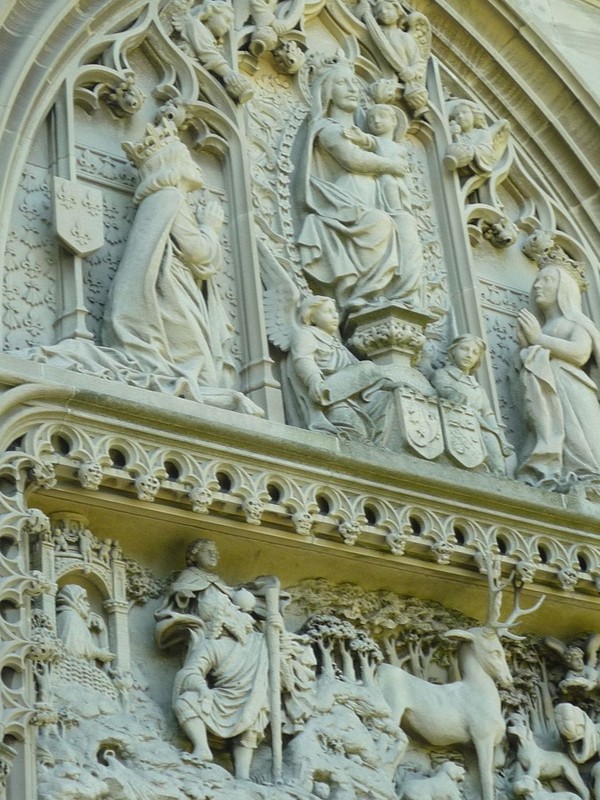
Belmont Chapel, Woodlawn Cemetery
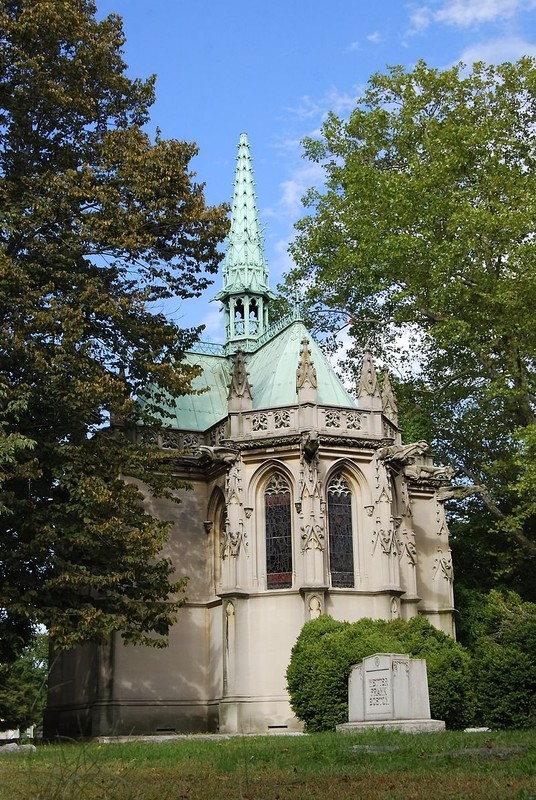
Backstory and Context
Text-to-speech Audio
Alva Erskine Smith was born in Mobile, Alabama on January 17, 1853 to a wealthy family. As a young socialite she attended boarding school and traveled in Europe prior to the Civil War. Her family moved to New York prior to the war, but the conflict did affect the family’s wealth. Alva Smith was ambitious and used marriage to improve her wealth and social status. In 1875, Alva Erskine Smith married into the Vanderbilt family, marrying William Kissam Vanderbilt with whom she had three children. Now a Vanderbilt, Alva made waves in New York elite society. Alva Vanderbilt was known for commissioning elegant estates and homes, often from Richard Morris Hunt and his sons, and worked closely on the designs. She shocked society in 1895 when she divorced from William Vanderbilt on charges of adultery (divorces were not common in late-nineteenth century society). Less than a year later, she married William Vanderbilt’s best friend, Oliver Hazard Perry Belmont, on January 11, 1896. Oliver Belmont died on June 10, 1908.
Alva Vanderbilt Belmont was extremely wealthy after both of her marriages, and after Oliver Belmont’s death she turned her attention and money towards the suffrage movement. She initially focused on campaigns for voting rights within each state, like the platform of the National American Woman Suffrage Association, but she was inspired by the more radical approach of British suffragists such as the Pankhursts after witnessing one of their rallies in London. Belmont put her wealth and social status into the movement, using her estates to host suffrage meetings and founding the Political Equality League in 1909. She joined the executive committee of the Congressional Union for Woman Suffrage with Lucy Burns and Alice Pail in 1914 (this was renamed the National Woman’s Party in 1916). In 1917 the National Woman’s Party organized the Silent Sentinels picket outside the White House to pressure President Woodrow Wilson about women’s suffrage.
Belmont’s work continued even after the ratification of the 19th Amendment in 1920. In 1921, she was elected President of the National Women’s Party and continued to use her wealth to support the work of getting women out to vote. With funds from Belmont, the National Woman’s Party purchased the Old Brick Capitol as the party headquarters in Washington, D.C. When the federal government seized the building to build the Supreme Court, Alva Belmont provided additional funds to purchase a new headquarters on Constitution Avenue (this is now the Belmont-Paul Women’s Equality National Monument).
For most of the 1920s Alva Belmont lived in Paris, but desired to be buried in New York when she died. Belmont died on January 26, 1933 in France and her children brought her body back to New York for her funeral as she requested. Belmont had provided detailed final instructions for her funeral and burial and fellow activist Alice Paul oversaw the arrangements. Belmont lay in state for two days at St. Thomas Church on Fifth Avenue before her funeral service. During that time a guard of two members of the National Woman’s Party stayed with her body. Her coffin was accompanied by a procession of honorary pallbearers, all feminist women’s rights activists, carrying purple, white, and gold banners, both during the funeral service and as the coffin was brough into the mausoleum at Woodlawn Cemetery.
The Belmont Chapel is now cared for by Woodlawn Cemetery. Only Oliver and Alva Belmont are buried in the mausoleum and the Vanderbilt children deeded the chapel over to the cemetery in 1936.
Cite This Entry
Thompson, Kathleen. "Alva Vanderbilt Belmont Gravesite." Clio: Your Guide to History. July 5, 2021. Accessed April 2, 2025. https://theclio.com/entry/136996
Sources
“At Woodlawn Cemetery, Remembering Alva Vanderbilt Belmont, The Socialite and the Suffragette.” Walking Off the Big Apple: A strolling guide to New York City by Teri Tynes. May 19, 2012. Accessed July 5, 2021. https://www.walkingoffthebigapple.com/2012/05/at-woodlawn-cemetery-remembering-alva.html.
“Ava Belmont.” National Park Service. April 29, 2020. Accessed July 5, 2021. https://www.nps.gov/people/alva-belmont.htm.
“Women’s History Month Spotlight: Alva Vanderbilt Belmont.” Vanderbilt Mansion National Historic Site. National Park Service. March 31, 2021. Accessed July 5, 2021. https://www.nps.gov/vama/blogs/womens-history-month-spotlight-alva-vanderbilt-belmont.htm.
“At Woodlawn Cemetery, Remembering Alva Vanderbilt Belmont, The Socialite and the Suffragette.” Walking Off the Big Apple: A strolling guide to New York City by Teri Tynes. May 19, 2012. Accessed July 5, 2021. https://www.walkingoffthebigapple.com/2012/05/at-woodlawn-cemetery-remembering-alva.html.
"Alva Belmont." Wikipedia. Accessed July 5, 2021. https://en.wikipedia.org/wiki/Alva_Belmont.
"Alva Belmont." Wikipedia. Accessed July 5, 2021. https://en.wikipedia.org/wiki/Alva_Belmont.
Harris & Ewing, Washington, D.C. Women's Voter Convention, Sept. Alva Belmont seated second from right. United States, 1915. Sept. Photograph. https://www.loc.gov/item/mnwp000282/. Accessed July 5, 2021. https://www.loc.gov/resource/mnwp.276009/.
“Women’s History Month Spotlight: Alva Vanderbilt Belmont.” Vanderbilt Mansion National Historic Site. National Park Service. March 31, 2021. Accessed July 5, 2021. https://www.nps.gov/vama/blogs/womens-history-month-spotlight-alva-vanderbilt-belmont.htm.
"Alva Belmont." Wikipedia. Accessed July 5, 2021. https://en.wikipedia.org/wiki/Alva_Belmont.
“At Woodlawn Cemetery, Remembering Alva Vanderbilt Belmont, The Socialite and the Suffragette.” Walking Off the Big Apple: A strolling guide to New York City by Teri Tynes. May 19, 2012. Accessed July 5, 2021. https://www.walkingoffthebigapple.com/2012/05/at-woodlawn-cemetery-remembering-alva.html.
“At Woodlawn Cemetery, Remembering Alva Vanderbilt Belmont, The Socialite and the Suffragette.” Walking Off the Big Apple: A strolling guide to New York City by Teri Tynes. May 19, 2012. Accessed July 5, 2021. https://www.walkingoffthebigapple.com/2012/05/at-woodlawn-cemetery-remembering-alva.html.
“At Woodlawn Cemetery, Remembering Alva Vanderbilt Belmont, The Socialite and the Suffragette.” Walking Off the Big Apple: A strolling guide to New York City by Teri Tynes. May 19, 2012. Accessed July 5, 2021. https://www.walkingoffthebigapple.com/2012/05/at-woodlawn-cemetery-remembering-alva.html.
"Alva Belmont." Wikipedia. Accessed July 5, 2021. https://en.wikipedia.org/wiki/Alva_Belmont.

